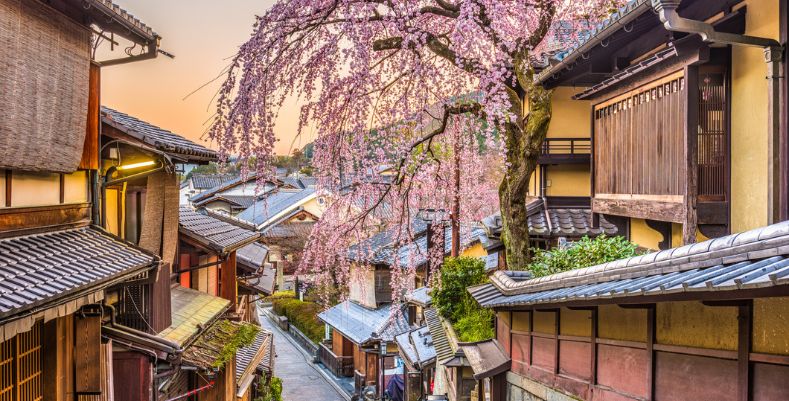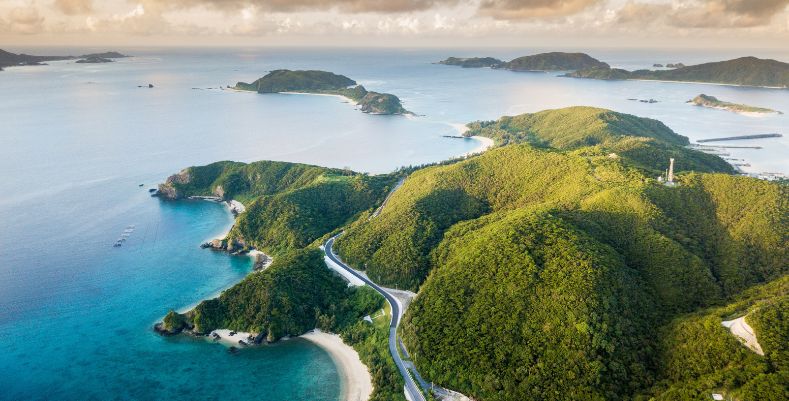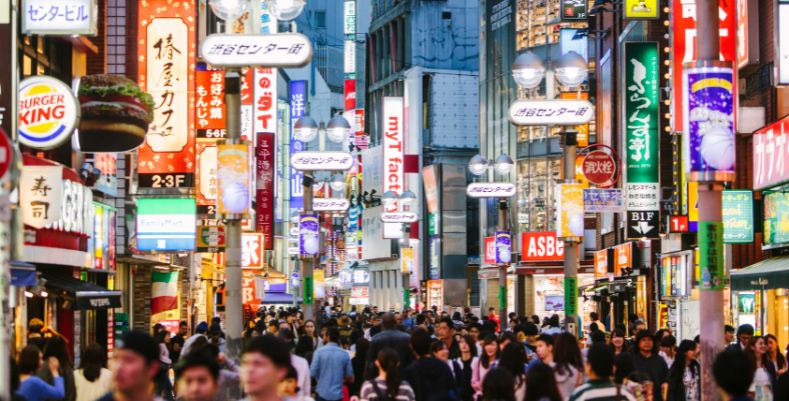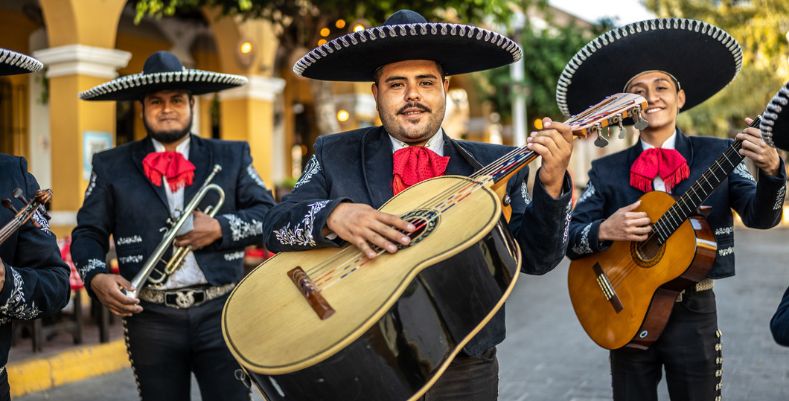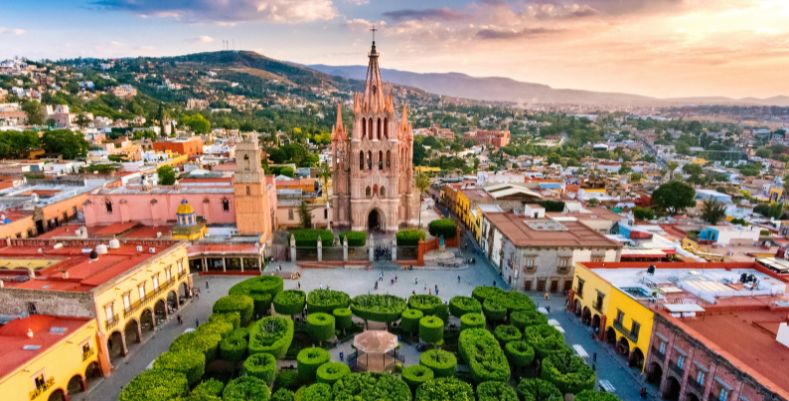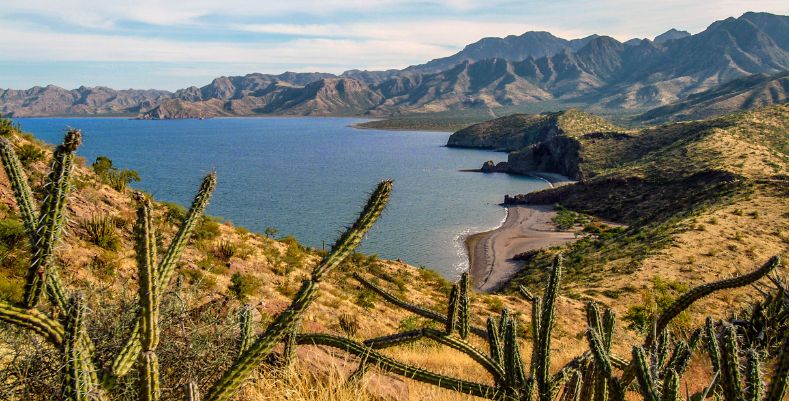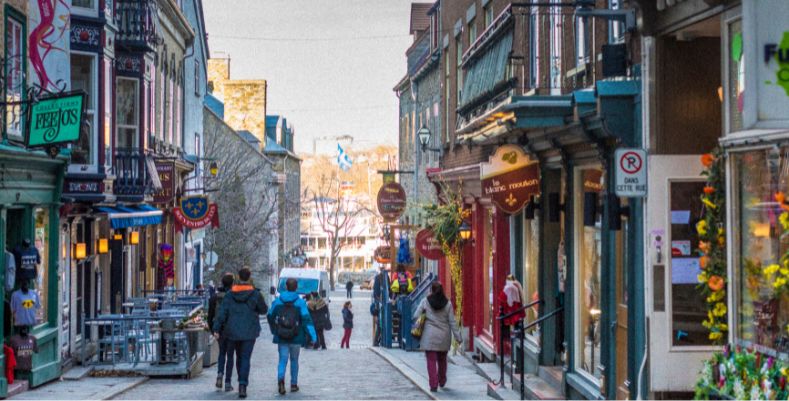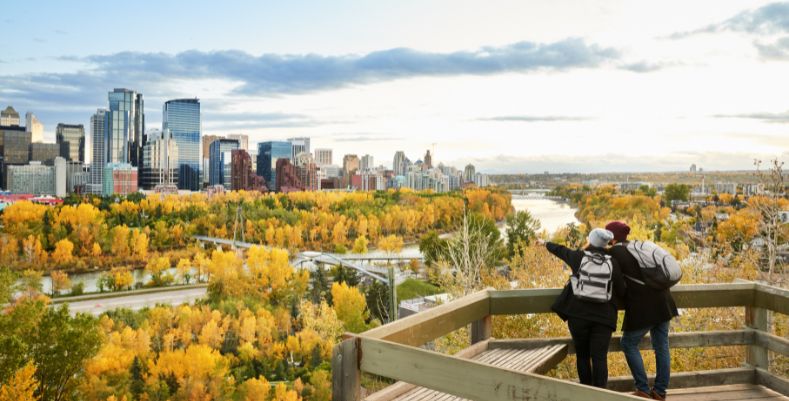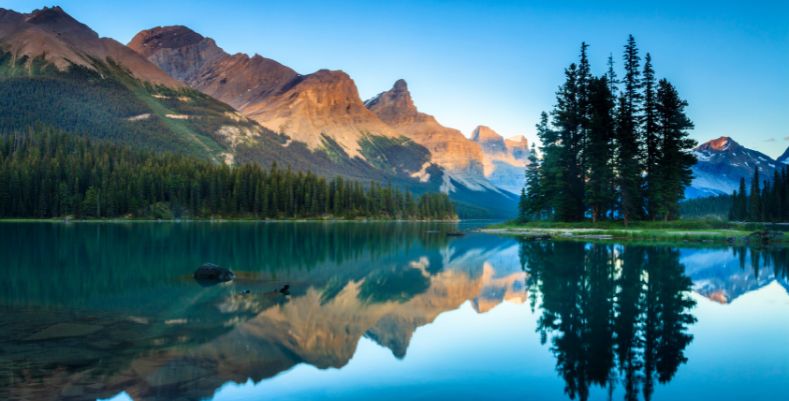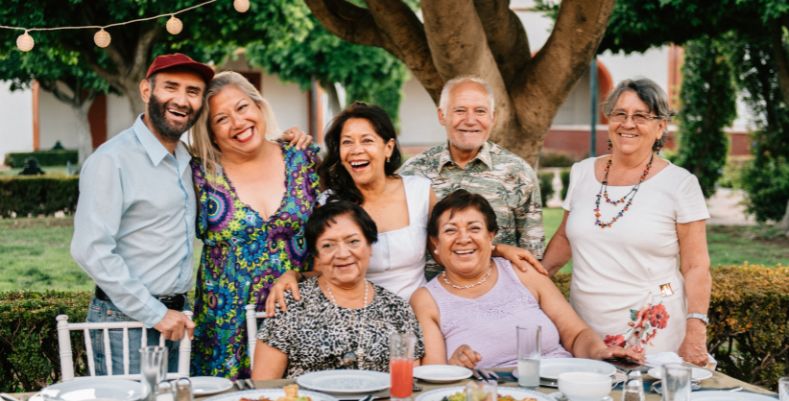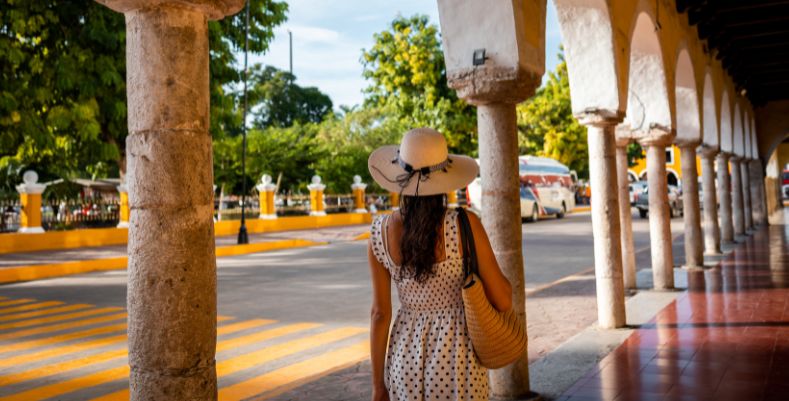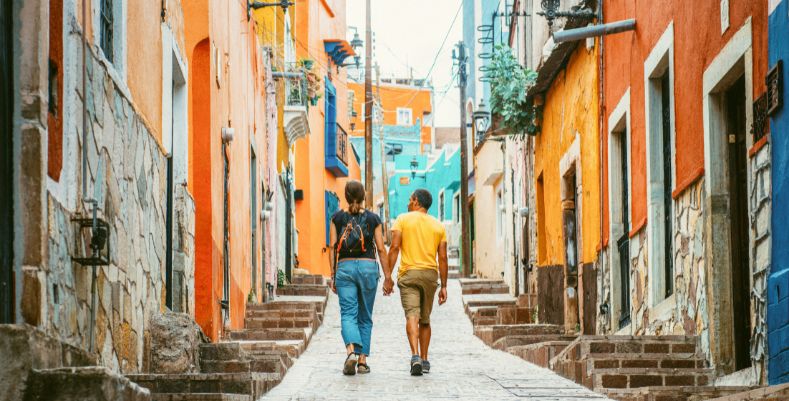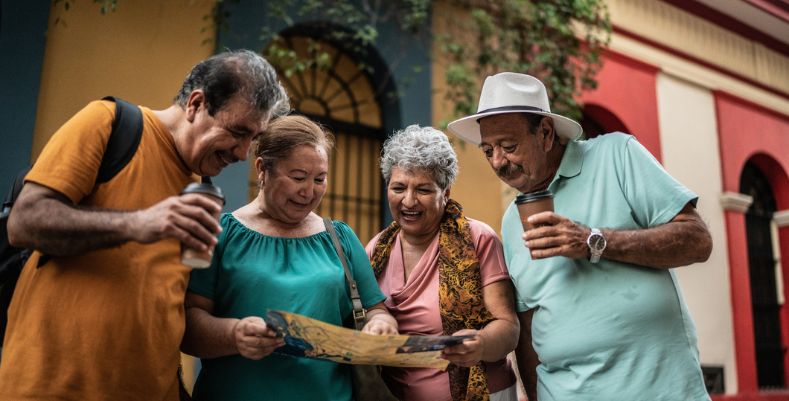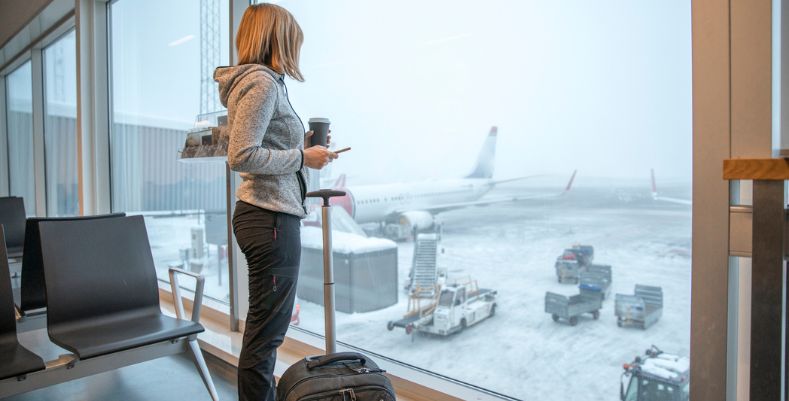
Planning a getaway during the winter months to escape cold weather at home, enjoy winter sports, or visit family and friends? Maybe you’re leaving your home in Nebraska for a Caribbean cruise, or maybe you’re flying to Switzerland to go skiing?
Whatever your plans, don’t let concerns about winter storms put a damper on your trip. If a blizzard or icy conditions affect your travel schedule, our Travelex travel insurance with winter storm coverage can help make sure that you feel taken care of if you have unforeseen delays or cancellations.
What is a winter storm and how can it impact my trip?
A winter storm is a weather event that often brings severe winter weather conditions like heavy snowfall, blizzards, sleet, and icy rain along with it.
They can easily ruin your travel plans because they can cause road closures, airport shutdowns, or conditions that make it too risky to travel.
So, if you’re traveling in winter, you could experience flight delays, cancellations, missed connections, issues reaching your destination in an owned or rented vehicle, and more.
Does Travelex travel insurance include winter storm coverage?
Our Ultimate, Advantage, and Essential plans can provide coverage if your trip gets disrupted because of a winter storm.
At Travelex, our winter storm insurance can help refund expenses that come up because of trip cancellations, travel delays, trip interruptions, and missed connections.
Have more questions about our winter storm coverage? You can lean on our customer service team for support.
What are the benefit limits for Travelex’s winter storm coverage?
The amount you can be reimbursed through storm insurance depends on which of our plans you choose.
Here's how much of your unexpected costs you could get back for each plan:
| Benefit | Ultimate | Advantage | Essential |
| Trip cancellation | 100% of insured trip cost ($50,000 maximum) | 100% of insured trip cost, ($10,000 maximum) | 100% of insured trip cost ($10,000 maximum) |
| Trip Interruption | 150% of insured trip cost ($75,000 maximum) | 125% of insured trip cost ($12,500 maximum) | 100% of insured trip cost ($10,000 maximum) |
| Travel delay | $2,000 ($250 per day maximum) | $1,000 ($250 per day maximum) | $600 ($200 per day maximum) |
| Baggage and personal effects | $2,000 ($500 per item limit) | $1,000 ($500 per item limit) | $750 ($500 per item limit) |
| Baggage delay | $500 | $200 | $200 |
| Emergency medical expense | $250,000 $50,000 for NH residents | $50,000 | $25,000 |
Don’t forget that our travel protection plans with storm insurance can help you only when an unforeseen eligible incident changes your trip plans. So, if you file a claim, we can only give you winter storm coverage because of a situation that you didn’t expect or know about beforehand.
What's an unforeseen eligible event when it comes to winter storms?
If your plan includes winter storm coverage and you have an unforeseen change of plans because of a snowstorm, we can help if you run into an issue like:
- A snowstorm cancels your flight.
- Your main home is snowed in from a blizzard and uninhabitable.
- You can’t get to your destination because a fallen tree is blocking the road.
Need some more clarification on unforeseen eligible events? Call our customer service team for support at 1-800-228-9792.
Does Travelex’s storm insurance include flight disruptions?
Yes, our winter storm coverage through our Ultimate, Advantage, and Essential plans can help you if a winter storm changes your flight schedule.
Here’s how our plans can offer support if you have a flight disruption because of a winter storm:
Trip cancellation coverage
Worried a winter storm might prevent your trip from happening? If you have one of our travel protection plans that offers storm insurance, we can reimburse you for a flight cancellation because of inclement weather, as long as you call off your trip before the departure date. We can also reimburse extra travel costs you spend to reach your destination and unused or prepaid parts of your trip.
Trip interruption coverage
If an unexpected snowstorm puts your vacation on hold, we can help while you get your plans back on track. Our storm insurance can help take care of your unused, prepaid, nonrefundable, and insured expenses. Plus, if you need to rush back home or rejoin your trip, or you're delayed reaching your destination, we can help reimburse those extra travel costs, too.
Travel delay coverage
Snowstorm slowing down your flight departure? If your flight is delayed for at least five hours, our winter storm coverage can reimburse you for your reasonable expenses during your delay, such as food, taxi fares, and hotel stays.
Make sure to save all your receipts for purchases you make while delayed so you can send them in with your claim.
Important: You can have travel storm insurance coverage for one delay during your vacation. So, if you're delayed more than once, we can help pay back expenses from the costliest delay.
Missed connection coverage
You may have scheduled your connecting flights wisely with enough time in-between to cruise to the next gate. But what if wintry weather hits and delays your first flight — causing you to miss your second flight?
If you miss a flight because the previous one was canceled or delayed for at least three consecutive hours, our winter storm insurance can help. We can refund you for extra transportation and lodging costs and unused, prepaid, and nonrefundable expenses — as long as the airline validates the flight delay for an eligible reason.

What are some other ways travel insurance with winter storm coverage can help me during my trip?
Travel storm insurance can do much more than reimburse you for flight disruptions.
Our plans can help if you find yourself in an unexpected and unfortunate situation like:
- Too much snow builds up on the roof of your rental home and it collapses, so you can’t stay there.
- You slip and fall on ice and need an unanticipated visit to the emergency room.
- Your suitcase is lost after a winter storm cancels your connecting flight.
Travel insurance with winter storm coverage can help with urgent medical expenses, issues with luggage, changes of plans, and more.
Want even more protection? Most of our plans are eligible for our optional upgrades, such as additional medical, additional baggage, adventure activities, and rental car damage.
How can I reach Travelex's 24/7 assistance provider if a winter storm impacts my trip?
If you have a Travelex plan, you have two convenient methods to get in touch with our travel assistance provider:
- Use the tap-to-call travel assistance feature on our Travelex Travel On app. We recommend you download the app prior to your journey to have easy access to its features and your policy details.
- Call our emergency assistance provider. For travelers in the U.S. or Canada, you can dial 1-800-555-0870 toll-free. If you find yourself outside of the U.S. or Canada, you can make a collect call to 1-416-977-1803.
How can I receive winter storm travel alerts during my trip?
It’s helpful to stay up to date with our travel alerts page, because we may list winter storms that could affect your trip.
If you have one of our Travelex plans, you can also get instant safety notifications, destination information, and more from our Travel On app. It’s smart to download the app right after purchasing our travel insurance so you can be in the know before departing.
Does Travelex offer travel insurance with trip cancellation coverage for any reason?
With our Ultimate, Advantage, and Essential plans, you can receive trip cancellation coverage for specific reasons.
However, if you want to be able to cancel your trip for any reason at all—not just winter storms—then consider adding our cancel for any reason upgrade (cancel for any fortuitous reason in NY) to our Ultimate plan. This upgrade lets you cancel your trip up to two days before it starts so you can get reimbursed with 75% of your insured trip expenses (up to $7,500).
You can use the cancel for any reason upgrade for a trip cost up to $10,000 if you’ve insured all nonrefundable trip expenses and insure additional expenses within 14 days of booking those travel arrangements. You also need to buy the upgrade with our Ultimate plan 31 days or more before you start your trip and within 21 days of your first trip payment.
Why do I need storm insurance if my scheduled airline might refund me?
Airlines have specific rules around canceling flights which could make getting your money back tricky, especially if you’ve bought a ticket that wasn't refundable.
Even when the airline does give you a refund for a flight cancellation, it's still worthwhile to have travel insurance with winter storm coverage. This is because the refund from the airline only covers the cost of your ticket, not other expenses you may have already paid for, like a hotel or a tour at your destination that you can't take because of the cancelled flight. So, the benefit of travel insurance for bad weather isn't just that it offers coverage for your flight, but that it also helps protect the rest of your trip costs.
Is travel insurance worth it for winter storms?
If you’re traveling in the winter, there’s a chance that severe weather could coincide with your trip schedule — and you can’t always predict if a snowstorm is going to unravel your vacation plans.
Winter storm coverage through travel insurance can help keep you from losing trip funds because of events you didn’t think would happen, like flight cancellations, delays, and missed connections.
How do I file a claim for a winter storm?
If you have a Travelex plan and want to file a claim for a winter storm, you can file the claim using our online claims portal.
If you need assistance with your claim, please contact our claims administrator:
Zurich Travel Claims Administration
- Phone: 1-800-501-4781
- Email: [email protected]
Don’t let your trip funds get snowed in, too: Consider storm insurance
Having winter storm coverage can feel like you’ve just been dug out of the snow: a feeling of relief when things go wrong and financial support and assistance when you need it most.
Make sure you know all about your storm insurance policy benefits and exclusions before you depart so you are prepared in case something unanticipated does come up.
Want more information on winter storm coverage with travel insurance? You can call our customer service team at 1-800-228-9792 from Monday through Friday, 8 a.m. to 7 p.m. CST.
Want to safeguard your vacation from winter storms?
Help protect your trip cost from unexpected winter storms with our travel insurance. Get a quote now.


